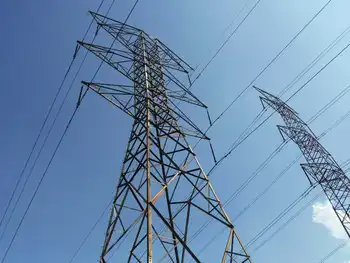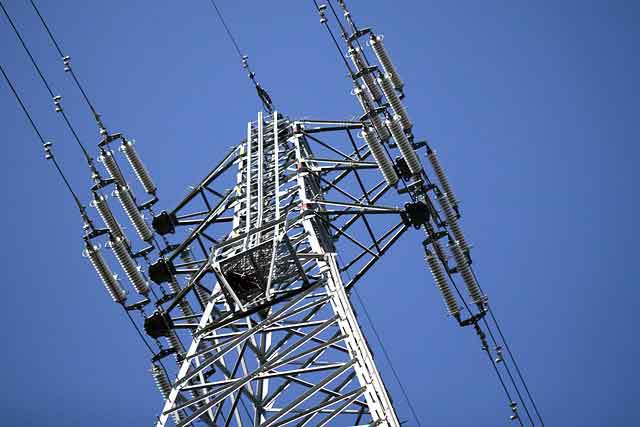Canada slow to turn to offshore wind
CAMBRIDGE, MASSACHUSETTS - Canada has been slow to develop its great potential for offshore wind power, and is probably at least four years away from having any large scale projects up and running, a new report says.
The study, from Cambridge, Mass.-based Emerging Energy Research (EER), says Canada is far behind Europe, and slower than the United States, in building offshore wind farms.
"The birth of the Canadian offshore wind industry is years away, despite vast resource potential off the coast of British Columbia and in the Great Lakes off Ontario," the report said.
There are just two Canadian offshore projects likely to come to completion in the next few years.
One is NaiKun Wind Development Inc.'s huge wind farm in Hecate Straight, off Haida Gwaii in British Columbia. But the first phase of that project won't likely be completed until 2012, and only if the company secures a contract in B.C. Hydro's upcoming clean energy call.
The other is Trillium Power Wind Corp.'s offshore wind farm planned for the eastern end of Lake Ontario, which is at least three years away from the start of construction.
By contrast, several European countries - Denmark, Britain, the Netherlands and Sweden - have been actively building large offshore wind projects since the late 1990s, and many more are on the drawing board across Europe.
The United States is also ahead of Canada, although no offshore projects have been built there yet. The Cape Wind project off New England will likely be the first, but there will likely be a surge in development starting around 2011, EER projects.
The key difference between Canada and Europe is that there is still lots of potential for land-based wind projects here, said EER analyst Matt Kaplan.
Denmark and Britain, by contrast, "don't have that many onshore sites [left]," he said. "There aren't many options available for them ... so they've had to adopt the offshore technology much more quickly than the U.S. or Canada, where there is currently a huge potential for onshore sites."
Offshore wind farms also tend to be more expensive - partly because of the cost of linking them up to the power grid - so, given a choice, many developers will choose onshore sites if available.
In addition, some European governments pay more for wind power generated offshore, creating an additional incentive.
Finally, Europe has also had very stable and consistent government policies supporting wind power of all kinds, something that has not been the case in Canada or the United States, Mr. Kaplan said.
Indeed, Ontario had a moratorium on any offshore wind projects for more than a year, until it was lifted in January. The province wanted to study the potential environmental effects before letting any projects move ahead.
The biggest planned offshore project in Ontario is Trillium's, which would involve placing 140 large turbines about 17 to 20 kilometres offshore in Lake Ontario, to generate about 700 megawatts of power.
Trillium chief executive officer John Kourtoff said in an interview that offshore wind should expand sharply in Canada when people become familiar with the concept.
But the industry has to get out the message that projects a considerable distance from shore will have little impact on visual vistas, he said.
Offshore wind turbines tend to be more efficient than those on shore, he said, because the winds are more powerful and blow when electricity is needed during the daytime hours.
The biggest issue will be the cost of transmitting the power by cable to the power grid, he conceded.
NaiKun's West Coast wind farm could eventually generate as much as 1,750 MW of power. The first phase, with about 60 to 100 turbines producing about 320 MW, could be under construction by 2011 if the company wins a power contract with the B.C. government.
NaiKun chairman Michael Burns said one other reason Canada is behind Europe in its offshore wind development is that there are fewer good places to site large offshore turbines along the coast in Canada. North America tends to have steep coastlines, making construction more difficult than in the shallows off Europe.
Hecate Straight in B.C. is an exception, Mr. Burns said, and it is a potentially huge resource. The entire area has enough wind energy to replace all the hydro power in British Columbia, he said.
Related News

Town of Gander forgives $250K debt from local curling club
GANDER - Gander town council has agreed to forgive the local curling club's debt of over $250,000.
Gina Brown, chair of the town council's finance committee, says the agreement has been put in place to help the curling club survive.
"When we took a look at this and realized there was a significant outstanding debt for Gander curling club … we have to mitigate," Brown told CBC Newfoundland Morning. "[Getting] what the taxpayers are owed, with also understanding and appreciating the role that that recreational facility plays in our community."
According to Brown, the debt comes from a combination of taxes and loans,…




